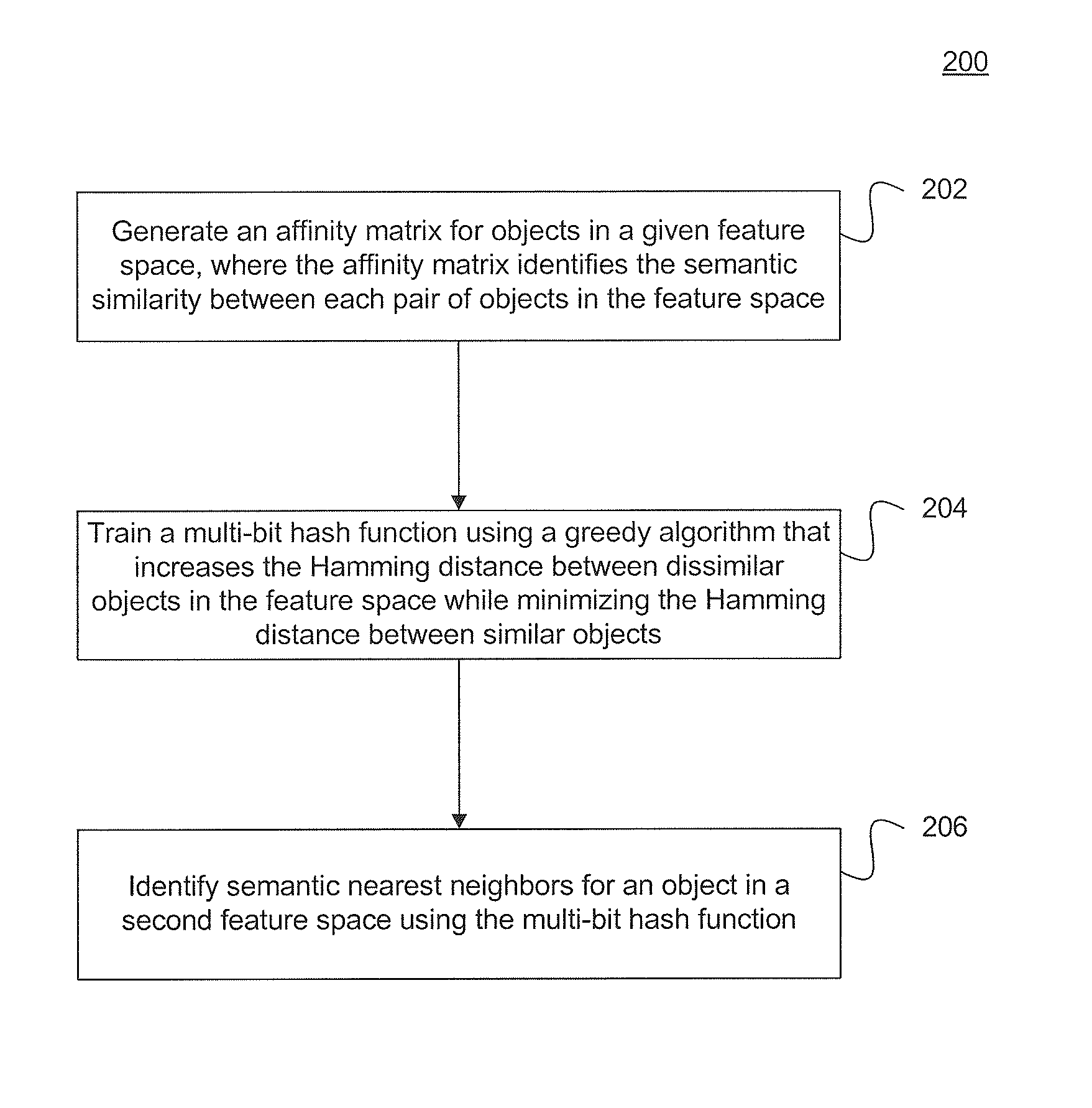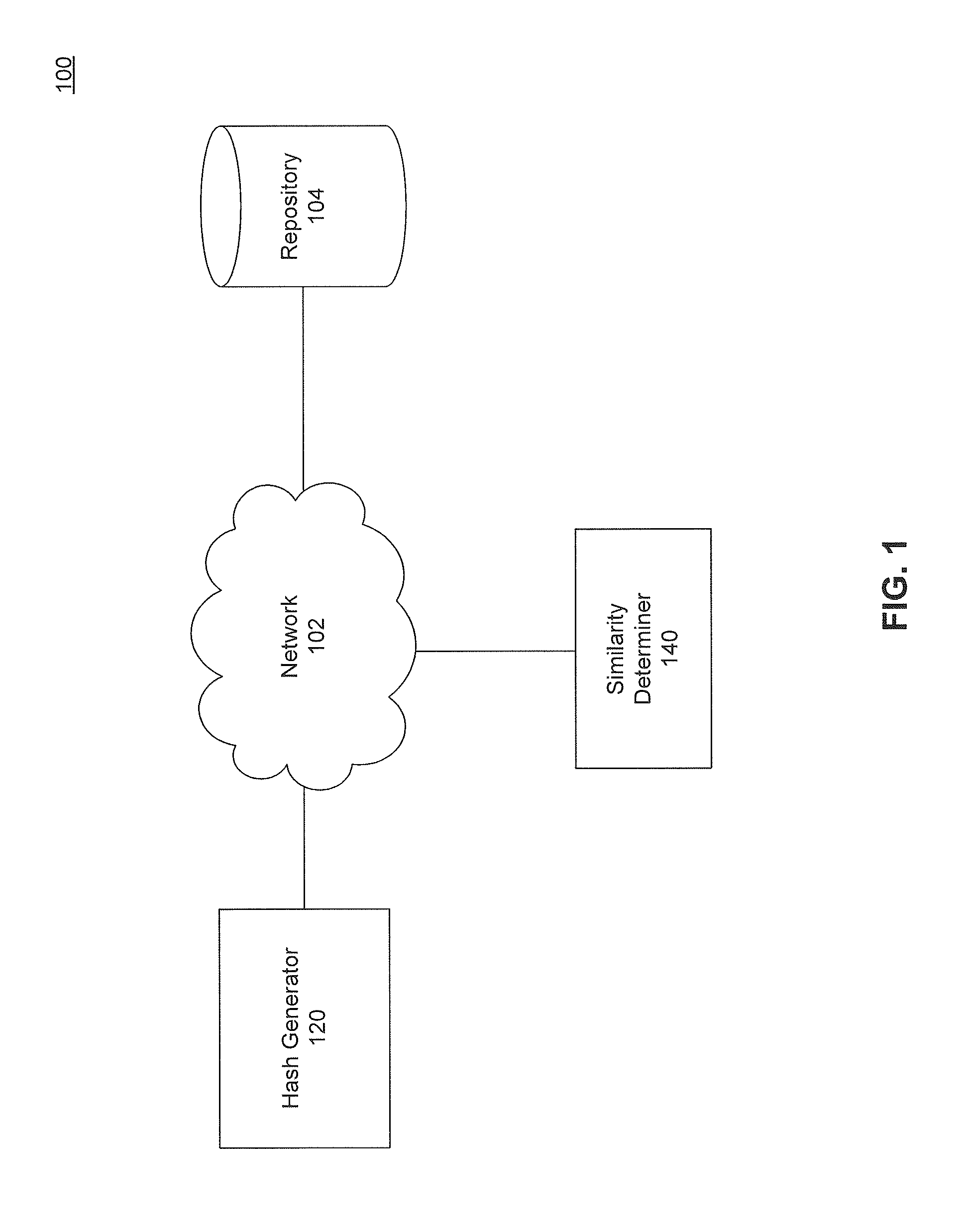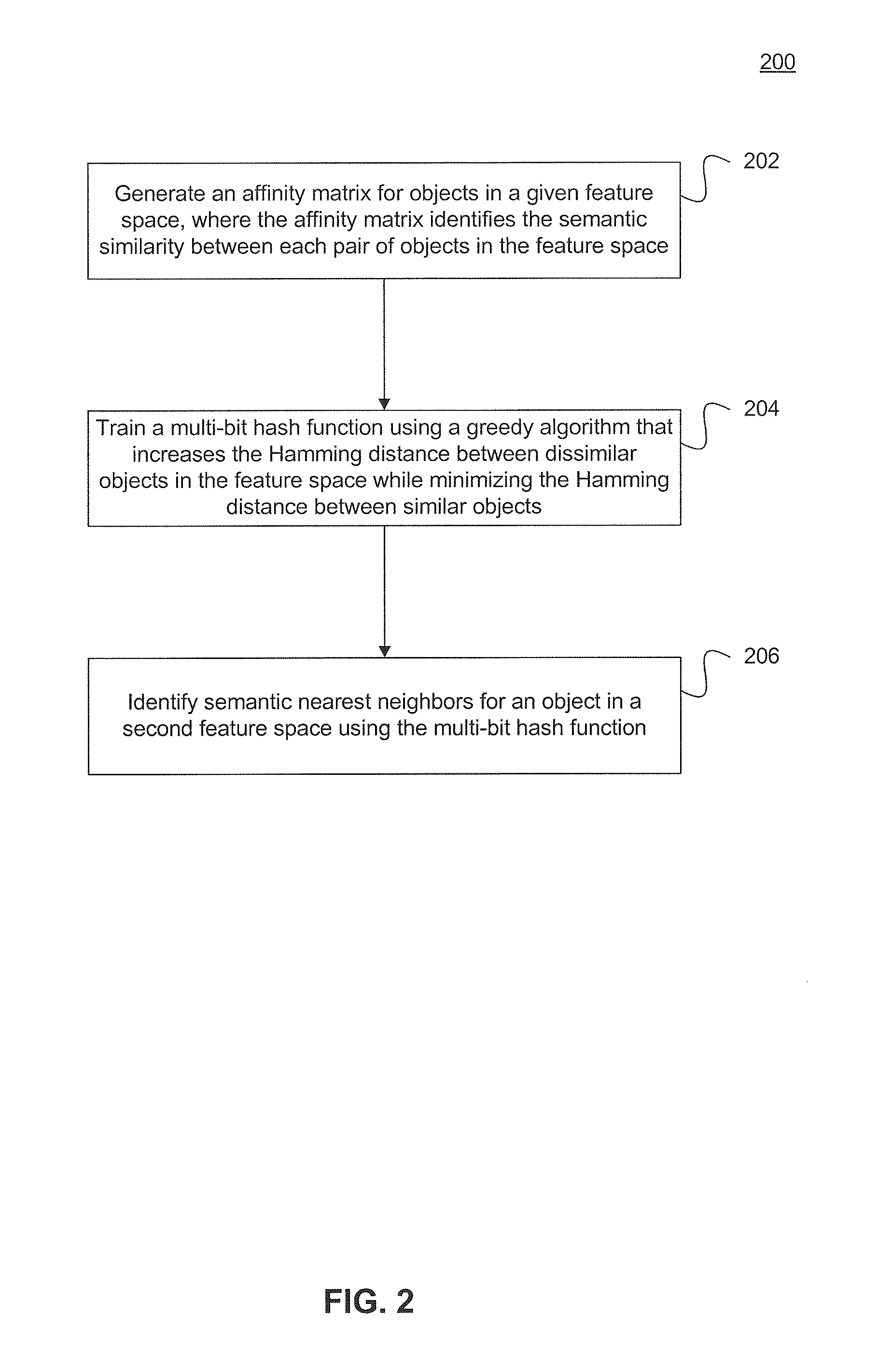Method and system for entropy-based semantic hashing
a semantic hashing and entropy-based technology, applied in the field of methods and systems for entropy-based semantic hashing, can solve the problems of high probability of collision of similar samples in at least one hash bucket, limited scalability to larger scale datasets, and requirement of evaluation on object pairs, so as to increase the hamming distance between dissimilar objects and minimize the hamming distance
- Summary
- Abstract
- Description
- Claims
- Application Information
AI Technical Summary
Benefits of technology
Problems solved by technology
Method used
Image
Examples
example computer embodiment
VI. Example Computer Embodiment
[0125]In an embodiment, the system and components of embodiments described herein are implemented using one or more computers, such as example computer 802 shown in FIG. 8. For example, hash generator 120 or similarity determiner 140 can be implemented using computer(s) 802.
[0126]Computer 802 can be any commercially available and well known computer capable of performing the functions described herein, such as computers available from International Business Machines, Apple, Oracle, HP, Dell, Cray, etc.
[0127]Computer 802 includes one or more processors (also called central processing units, or CPUs), such as a processor 806. Processor 806 is connected to a communication infrastructure 804.
[0128]Computer 802 also includes a main or primary memory 808, such as random access memory (RAM). Primary memory 808 has stored therein control logic 868A (computer software), and data.
[0129]Computer 802 also includes one or more secondary storage devices 810. Seconda...
PUM
 Login to View More
Login to View More Abstract
Description
Claims
Application Information
 Login to View More
Login to View More - R&D
- Intellectual Property
- Life Sciences
- Materials
- Tech Scout
- Unparalleled Data Quality
- Higher Quality Content
- 60% Fewer Hallucinations
Browse by: Latest US Patents, China's latest patents, Technical Efficacy Thesaurus, Application Domain, Technology Topic, Popular Technical Reports.
© 2025 PatSnap. All rights reserved.Legal|Privacy policy|Modern Slavery Act Transparency Statement|Sitemap|About US| Contact US: help@patsnap.com



